Yes, almost all new ice skates need sharpening before hitting the ice. Why? Because factory sharpening focuses on protecting the blades during shipping - not performance. Skating on dull or uneven edges can make it harder to stop, turn, or even stay balanced. This is especially tricky for beginners and frustrating for experienced skaters.
Here’s what you need to know:
- Factory sharpening is inconsistent. Blades may arrive dull or uneven, making them unreliable for skating.
- Professional sharpening is key. It customizes the edges for your weight, skill, and skating style, costing about $8–$15 in the U.S.
- Sharp skates = better grip and control. Properly sharpened blades reduce falls and improve movement on the ice.
Quick tip: Check your blades with a simple fingernail test. If they feel dull or glide without catching, it’s time for professional sharpening. Don’t skip this step - it’s a small effort that makes a huge difference in safety and performance.
Skate sharpening: Everything you need to know (2025)
Factory Sharpening vs. Professional Sharpening
Getting the most out of your new ice skates starts with understanding the difference between factory sharpening and professional sharpening. While both create edges on your skate blades, they deliver very different results on the ice. Let’s break it down.
What Is Factory Sharpening?
Factory sharpening is the initial edge applied to skate blades during manufacturing. It’s done with automated machines and serves one primary purpose: protecting the blades during shipping. It doesn’t account for the skater’s weight, skill level, or skating style.
The problem? Factory edges are often uneven, too shallow, or dulled by the time the skates reach you. This generic approach ignores key factors that directly impact performance, like how well your skates grip the ice or how smooth your turns feel.
Another issue is consistency - or lack of it. Since factory sharpening is mass-produced, the quality can vary wildly even within the same batch of skates. You might get lucky with a decent edge, or you might end up with blades that feel like they’re sliding all over the ice.
Benefits of Professional Sharpening
Professional sharpening is a whole different ball game. Instead of a one-size-fits-all edge, this process is all about precision. Using specialized equipment, a professional sharpener transforms factory blades into performance-ready tools tailored to your specific needs. They’ll inspect your blades for flatness, nicks, or other flaws that factory machines often miss.
The real magic of professional sharpening lies in customization. Professionals choose the right hollow depth based on factors like your weight, skill level, and skating style. For example, a hockey player’s edges will differ from a figure skater’s, and a heavier adult requires a different setup than a lighter teenager. This personalized approach improves grip, control, and safety - giving you confidence from your very first glide.
Professional sharpeners can also offer advanced options, like the Flat Bottom V (FBV) grind. This technique balances grip and glide in a way that factory methods simply can’t match. It’s a game-changer for anyone looking to improve their skating experience, whether you’re chasing pucks or perfecting spins.
And the best part? It’s affordable. In the U.S., professional sharpening typically costs $8 to $15 per pair, with some shops even offering the first sharpening for free when you buy skates. Considering how much it boosts performance and reduces the risk of injury, it’s a small price to pay for big results.
| Sharpening Type | Process | Customization | Performance | Cost |
|---|---|---|---|---|
| Factory | Generic, automated | None | Often inadequate | Included |
| Professional | Custom, precision equipment | High | Optimal grip and control | $8-$15 |
Why Sharp Skates Matter
Sharp blades are a game-changer when it comes to performance, safety, and confidence on the ice. With properly sharpened skates, every move - from a graceful glide to a quick pivot - feels more controlled and predictable.
Better Grip, Control, and Movement
When your blades are sharp, they create two defined edges that grip the ice, giving you precise control. This is essential for quick turns, clean stops, and overall stability. For hockey players, sharp edges mean the ability to make sudden directional changes without slipping. For figure skaters, they ensure smoother takeoffs and secure landings during jumps.
Sharp blades also improve stopping power, letting you decelerate quickly to avoid collisions in busy rinks. Plus, they enhance push-offs, giving you that extra burst of acceleration. On the flip side, dull blades can compromise all of this, making skating not only harder but also riskier.
Safety Risks with Dull Blades
Dull blades aren't just frustrating - they're dangerous. They increase the chance of falls, especially during turns or abrupt stops. This is particularly concerning for beginners who are still working on their balance and coordination. Coaches and parents often notice that skaters with dull blades struggle with basic techniques and take more tumbles. These falls can lead to anything from minor bruises to serious injuries like sprains.
But it’s not just about falling. Dull blades can slow your reaction time to sudden changes on the ice, leaving you sliding when you need to pivot. Even seasoned skaters may find their blades unresponsive during complex moves, which can throw off their technique and increase injury risk. Worse still, if you don’t trust your gear, your confidence takes a hit - and that affects your overall performance. Regular sharpening is crucial for staying safe and skating your best.
| Blade Condition | Grip & Control | Safety Risk | Performance Impact |
|---|---|---|---|
| Sharp | High | Low | Explosive acceleration, precise turns, reliable stops |
| Dull | Low | High | Slipping, poor control, more frequent falls |
How to Check If Your New Skates Need Sharpening
Before you hit the ice, take a moment to check your skate blades. Even brand-new skates can have issues like shipping damage or dull edges that might affect your performance and safety.
Look for Blade Damage or Dull Edges
Start by inspecting your skate blades under good lighting. Place them on a stable surface and look for any obvious problems like nicks, scratches, dents, or rust. A sharp blade will have a shiny, mirror-like edge that reflects light. If the edge looks dull, cloudy, or uneven, it’s time for a sharpening session. Sometimes, factory-fresh skates might have a bit of residue or packaging grime that can hide the blade's true condition, so give them a good once-over.
Quick Tests to Check Sharpness
You can try a couple of easy tests to see if your blades are sharp enough:
- Fingernail Test: Gently run your fingernail along the edge at a 45-degree angle. If your nail catches or the edge feels rough, it’s likely sharp. If it glides over without catching, the blade might be dull.
- Grip Test: Carefully run your finger along the hollow of the blade (the concave part). A sharp blade will tug or scrape slightly against your skin, while a dull one will feel smooth and slide easily.
These simple tests can give you a quick idea of whether your skates are ready for action.
Not Sure? Get Them Sharpened
If you’re still unsure after checking, it’s better to play it safe and get your skates professionally sharpened. Beginners especially should consider having their skates sharpened before their first use. Many skaters report improved grip, easier stopping, and fewer falls after getting their blades professionally done.
Some retailers even offer a free or low-cost sharpening service when you purchase skates. Plus, professional sharpeners can help you choose the right blade hollow or edge profile based on your skating style, whether you’re into hockey or figure skating. It’s a small step that can make a big difference in your skating experience.
sbb-itb-17ade95
Where and How to Get Your Skates Sharpened
Once you've figured out your skates need sharpening, you've got a few options. Your choice will depend on how often you skate and how much you're willing to spend. Let's break it down.
Professional Skate Sharpening Services
If your skates are brand new, going to a professional sharpener is the way to go. Most ice rinks, hockey shops, or sporting goods stores offer this service. They use specialized equipment to ensure your blades are sharpened with precision, giving you the best performance on the ice.
Expect to pay $8 to $15 per session in the U.S.. The first sharpening might take longer because they’ll need to remove the factory finish and set the initial hollow. This process can take up to four times longer than a routine sharpening. The good news? Many retailers sweeten the deal by offering a free first sharpening when you buy new skates. Plus, professional sharpening doesn’t just sharpen your blades - it also improves your control on the ice.
Another perk of professional services is customization. They can adjust the depth of hollow (DoH) or radius of hollow (RoH) to suit your skating style. For example, hockey players often prefer a deeper hollow for better grip during quick turns, while figure skaters lean toward a shallower hollow for smoother gliding. Some shops even have loyalty programs where your sixth sharpening is free.
At-Home Maintenance Tools
For skaters who like to keep their edges in check between professional sessions, honing stones and hand-held sharpeners are handy. These tools, usually priced under $20, are great for smoothing out nicks or keeping your edges sharp after a few sessions on the ice. Popular choices include ceramic honing stones or compact edge tools that easily fit in your skate bag.
Think of hand-held sharpeners as the nail files of the skate world - they’re perfect for touch-ups but won’t replace a full sharpening.
At-Home Sharpening Equipment for Frequent Skaters
If you’re on the ice several times a week, investing in high-end at-home gear like the Sparx Sharpener might be worth it. These machines, which cost around $500 or more, provide professional-quality results right in your home.
The big advantage here is convenience. You can sharpen your skates whenever you need without making a trip to the shop or waiting in line. Over time, this could save you money if you’re sharpening often - hockey skates typically need it every 8-10 hours of ice time, while figure skates can go 20-25 hours before needing attention.
| Method | Cost per Use | Skill Required | Convenience | Quality of Sharpening |
|---|---|---|---|---|
| Professional Service | $8–$15 | None | Moderate | High |
| Hand-held Sharpeners/Honing | <$20 | Low | High | Low (touch-ups only) |
| Automated At-Home | $500+ | Low | Very High | High |
So, what’s the best approach? Start with professional sharpening for new skates to get the perfect setup. Then, depending on how often you skate and your budget, you can decide if at-home tools are a good fit for you.
Snowfeet* Mini Ski Skates vs. Ice Skates and Long Skis
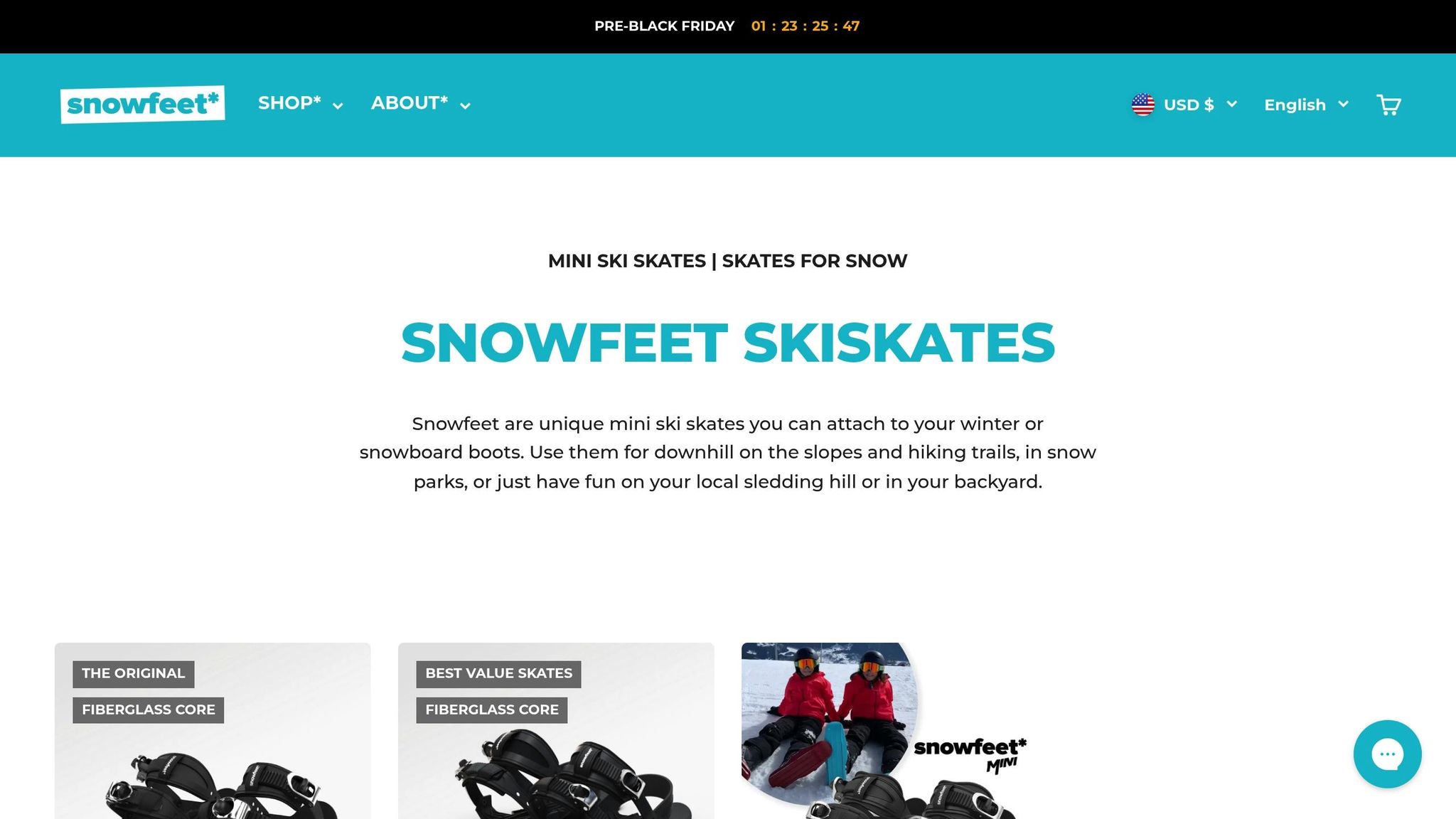
When it comes to winter sports gear, keeping things low-maintenance can be a game-changer. That’s where Snowfeet* Mini Ski Skates shine. These compact mini skis stand out as a fun alternative to traditional ice skates and long skis, offering a simpler, more convenient experience - especially when it comes to upkeep.
Snowfeet* vs. Ice Skates
Ice skates demand a lot of care. After every 8–25 hours of use, you're likely heading to the pro shop for sharpening. Plus, there’s the hassle of transporting them with blade guards, avoiding rust during storage, and only being able to use them at dedicated rinks. It’s a lot.
Snowfeet*, on the other hand, are a breeze. Their shorter, durable metal edges hold up much longer between sharpenings. At just 15 inches, their compact design resists wear and tear, so you spend less time worrying about maintenance and more time enjoying the snow.
And the convenience? Snowfeet* strap right onto your regular winter boots - no special footwear or accessories needed. They fit easily in your backpack, ready to go wherever there’s snow. Forget rink schedules or lugging around a skate bag. With Snowfeet*, you can hit up a snowy hill, park, or even your backyard on a whim.
Snowfeet* vs. Long Skis
Long skis come with their own set of challenges. They’re bulky, tough to transport, and require consistent upkeep. Between waxing, edge tuning, and binding adjustments, maintenance costs can add up, often running $20–$50 per session at ski shops.
Snowfeet* skip all of that. Their strap-on design keeps things simple, requiring minimal care. Plus, their short length makes them far easier to handle, especially for beginners. Long skis can feel overwhelming for first-timers, with a steep learning curve and the added pressure of navigating ski resorts. Snowfeet* flip the script - offering better balance and control, so you can practice in your local park without the expense or logistics of a resort trip.
For anyone new to winter sports, or just looking for a more laid-back experience, Snowfeet* are an easy win.
Comparison Table: Snowfeet* Mini Ski Skates vs. Other Options
| Attribute | Snowfeet* Mini Ski Skates | Ice Skates | Long Skis |
|---|---|---|---|
| Sharpening Frequency | Rarely needed | Every 8–25 hours of use | Occasional edge tuning |
| Portability | Fits in a backpack | Requires a skate bag | Bulky, needs a ski bag |
| Maintenance Ease | Minimal | Moderate (regular sharpening) | Moderate to high |
| User Experience | Beginner-friendly | Requires skill, rink access | Requires skill, resort access |
| Equipment Needed | Regular winter boots | Specialized skates, guards, bag | Skis, boots, bindings |
| Storage Requirements | Minimal space | Moderate space | Large storage area |
| Learning Curve | Easy and fast | Moderate | Steep |
| Venue Flexibility | Any snowy area | Ice rinks only | Ski resorts/mountains |
The table makes it clear: Snowfeet* are all about simplicity and fun. They’re easy to use, low-maintenance, and perfect for anyone looking to enjoy winter without the extra hassle.
Conclusion: Sharp Blades and Snowfeet* Benefits
Getting your new ice skates professionally sharpened before hitting the ice isn’t just a good idea - it’s a must. Properly sharpened blades give you better grip, improved control, and a confidence boost when making those tricky stops or turns. The difference is like night and day compared to unsharpened blades.
Skate shops always recommend sharpening your skates right away. Factory edges just don’t cut it (pun intended). Professional sharpening ensures you get the grip and control you need, setting you up for success on the ice. This attention to detail isn’t just for traditional skates - it applies to newer options like Snowfeet* too, where performance meets simplicity.
Now, let’s talk about why Snowfeet* Mini Ski Skates are a game-changer. Unlike traditional skates, these little guys don’t demand constant maintenance. Their tough metal edges stay sharp longer, and at just 15 inches, they’re super portable and less likely to wear out. Plus, you’re not limited to ice rinks. Strap them onto your winter boots, and you’re ready to glide on snow or ice - wherever your adventures take you.
Snowfeet* are all about convenience. Forget about scheduling sharpening sessions or lugging around blade guards. These mini skates fit easily into a backpack and work on multiple surfaces. For beginners, they’re a great way to dive into winter sports without the overwhelming gear setup. And for everyone else? They’re just plain fun.
Whether you’re sticking with traditional ice skates or trying out Snowfeet*, the key is having equipment that’s ready to perform. Sharp blades keep you safe and make every glide more enjoyable, while Snowfeet* offer a hassle-free way to experience the thrill of winter sports. Either way, you’re set for an awesome time in the snow or on the ice.
FAQs
Why should I get my new ice skates professionally sharpened instead of relying on factory sharpening?
When you buy new ice skates, the factory sharpening might look fine, but it’s usually not enough for top-notch performance. Sure, the blades might seem sharp, but they often lack the precision needed for solid grip and control on the ice. Getting your skates professionally sharpened ensures the edges are perfectly aligned and adjusted to suit your skating style. This means better safety, smoother balance, and easier maneuverability.
Professional sharpeners use advanced tools and techniques that go beyond what factory processes can achieve. Whether you're just starting out or you're a seasoned skater, having your skates sharpened by a pro can make a big difference in how you perform - and how confident you feel - on the ice.
Do I need to sharpen my new ice skates before using them for the first time?
Yes, most new ice skates need to be sharpened before you hit the ice. While some skates might come with a factory edge, it’s usually not sharp enough for proper performance.
Here’s a quick way to check if your skates are ready: lightly drag your fingernail across the blade. If it slides without catching, the edges probably need sharpening. Also, look for any nicks or shiny spots on the blade - these are telltale signs of dullness. Sharp skates aren’t just about better performance; they’re key for control, safety, and a smoother ride on the ice.
For the best results, take your skates to a professional for sharpening. If you’re feeling adventurous, you can also learn to sharpen them yourself with a reliable sharpening tool.
Do I need to sharpen new ice skates before using them for the first time?
Yes, most new ice skates need sharpening before you hit the ice. While they might come with a factory edge, it’s usually not sharp enough for smooth or controlled skating. Properly sharpened blades give you better grip, more control, and a safer, more enjoyable experience.
Here’s a quick test: lightly run your fingernail along the blade. If it doesn’t catch or feel sharp, it’s time for a touch-up. For the best results, take them to a professional sharpener. If you’re experienced, you can use high-quality sharpening tools at home. Starting with sharp blades means you can skate confidently and enjoy the ride from the very first glide!







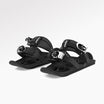
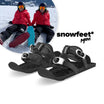
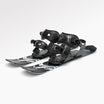
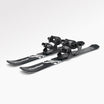

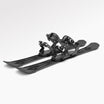

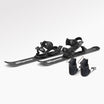






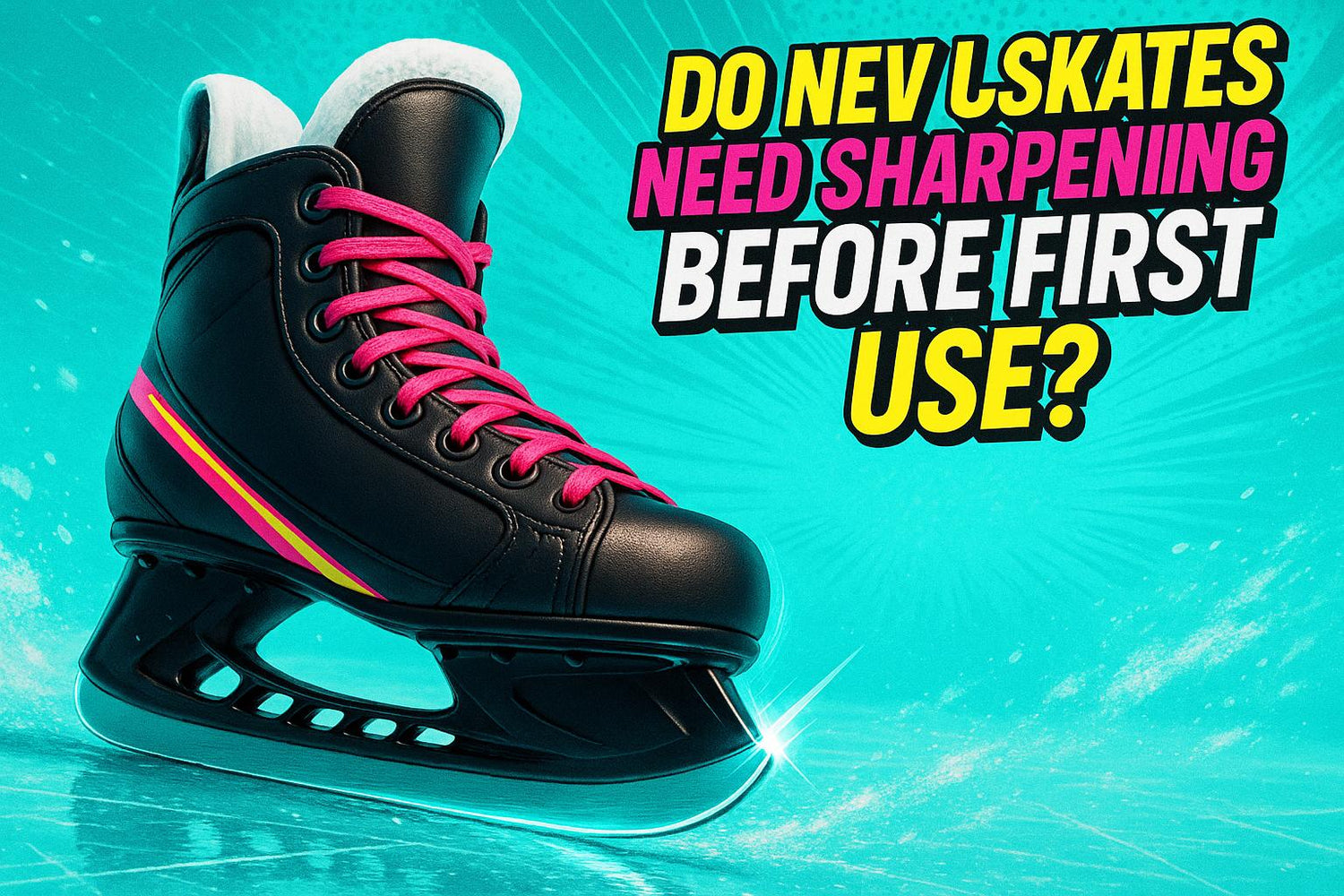
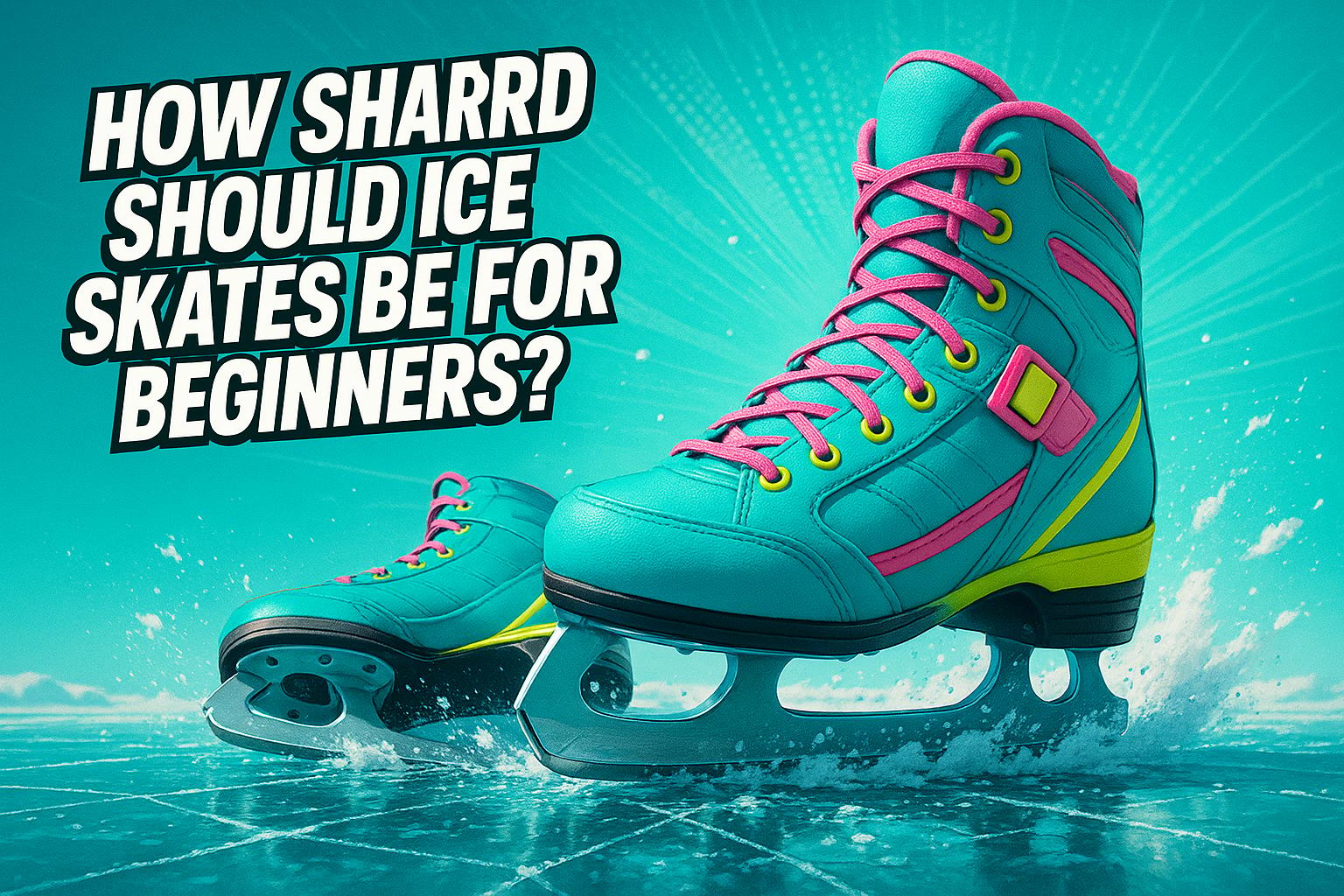
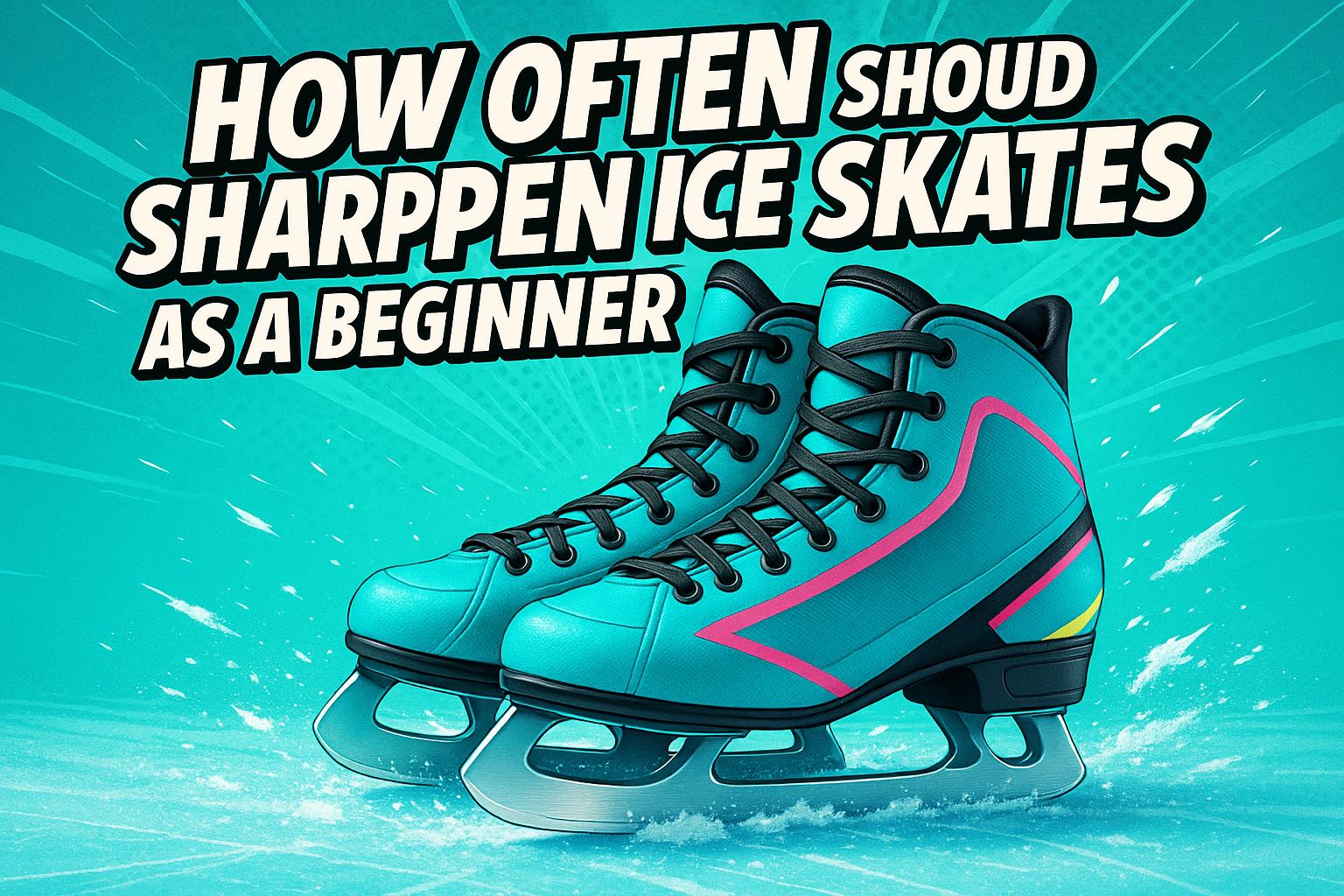




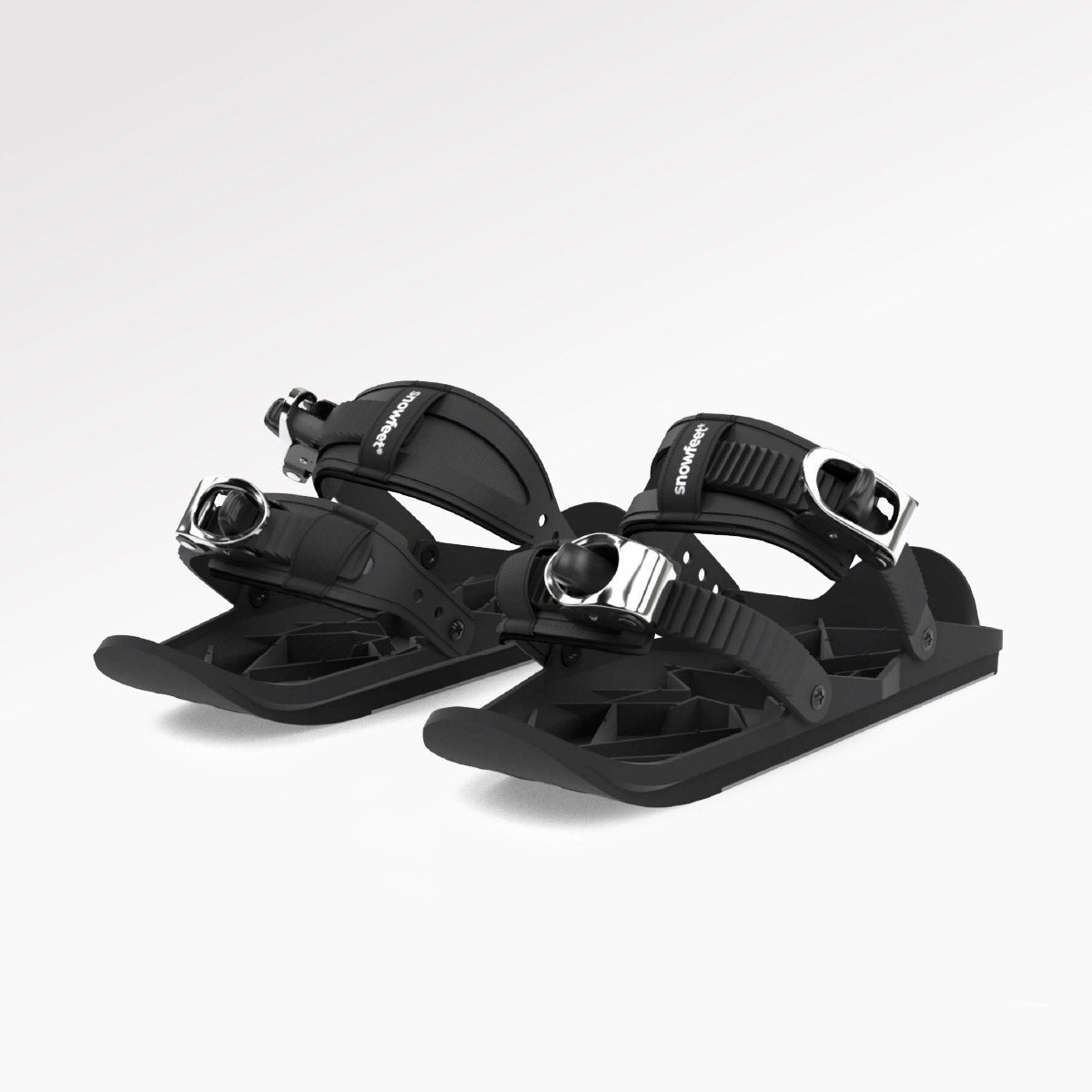
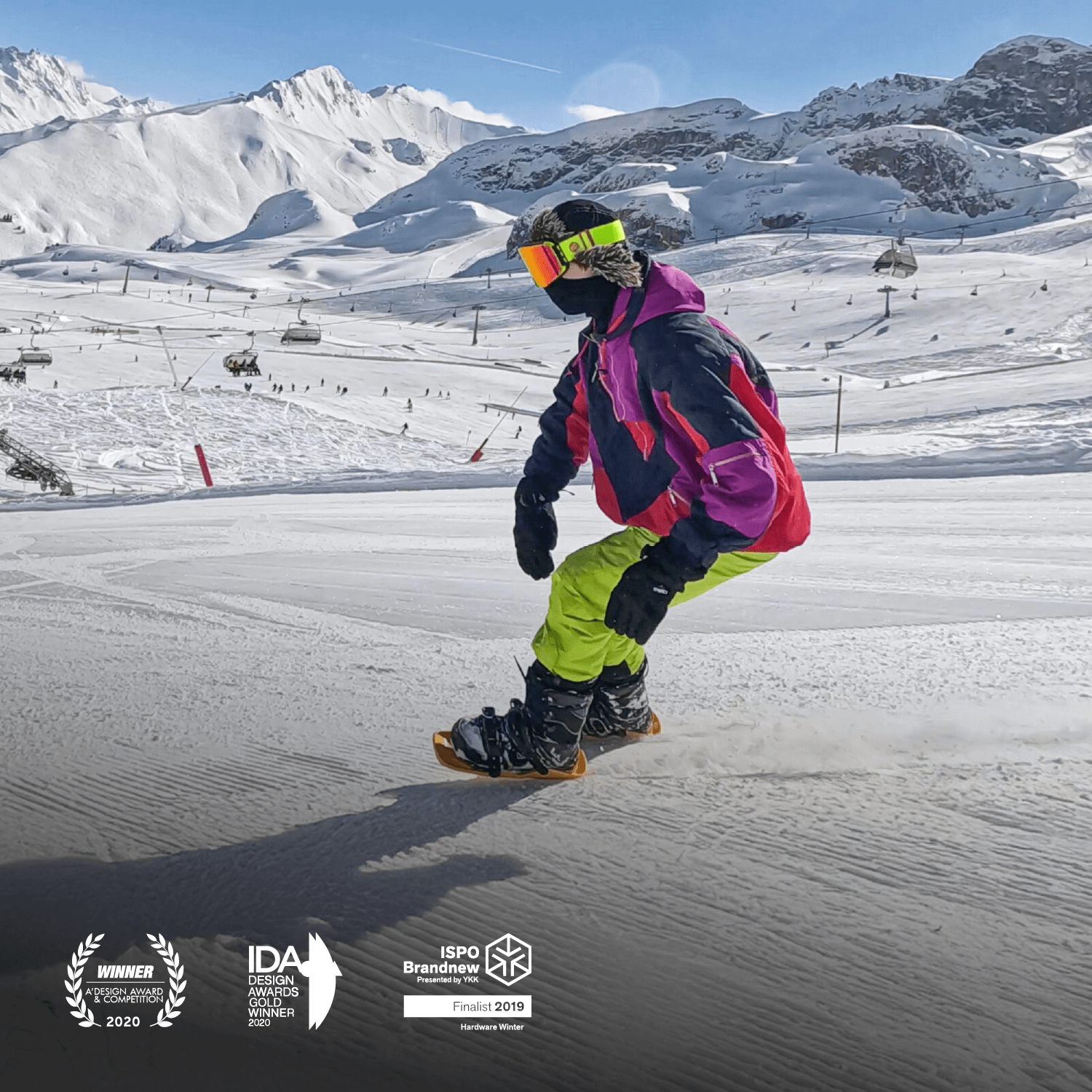
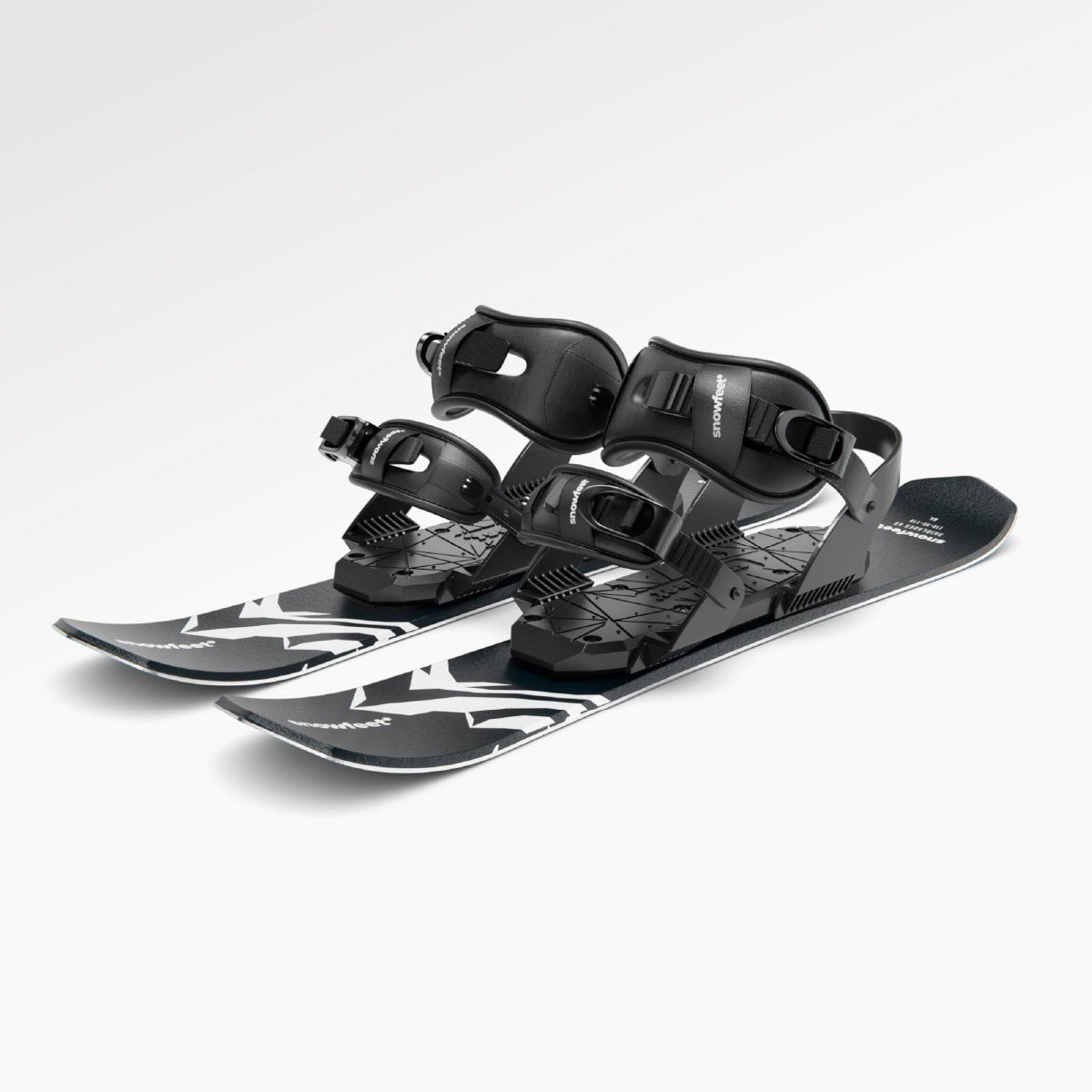

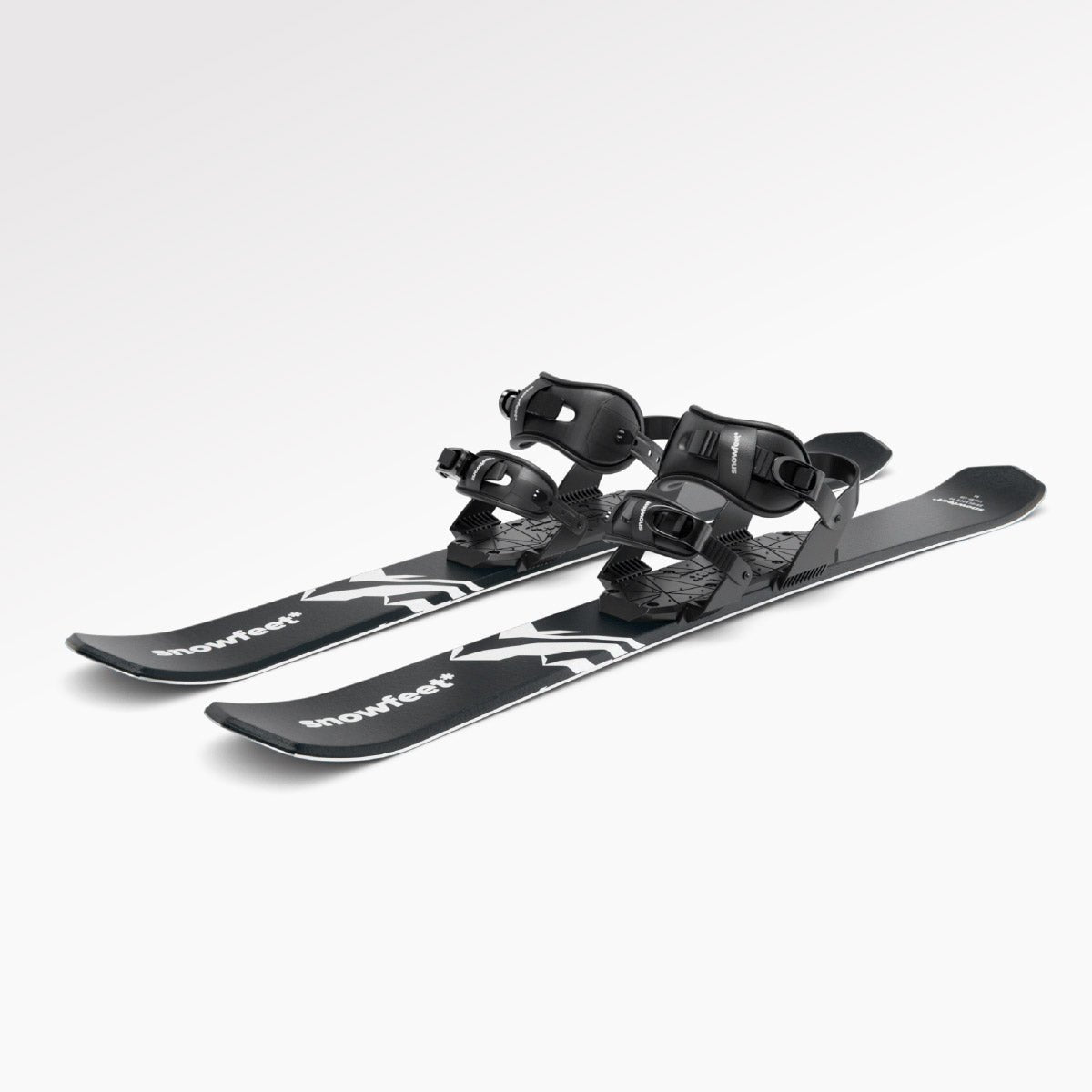

Leave a comment
This site is protected by hCaptcha and the hCaptcha Privacy Policy and Terms of Service apply.